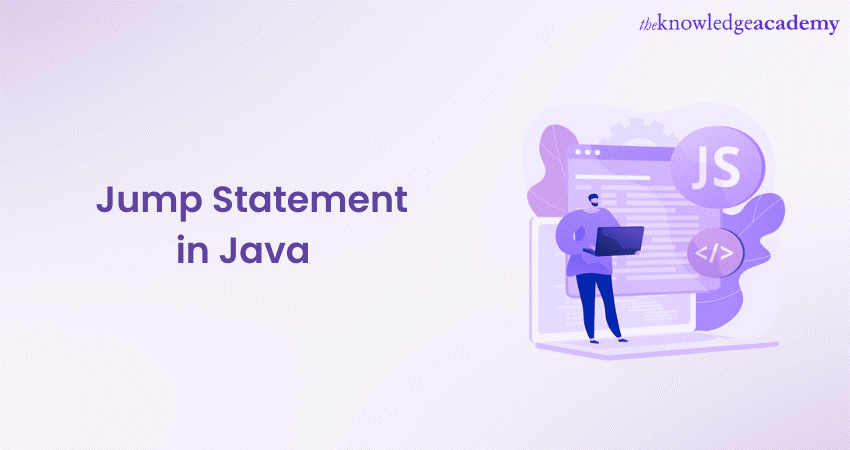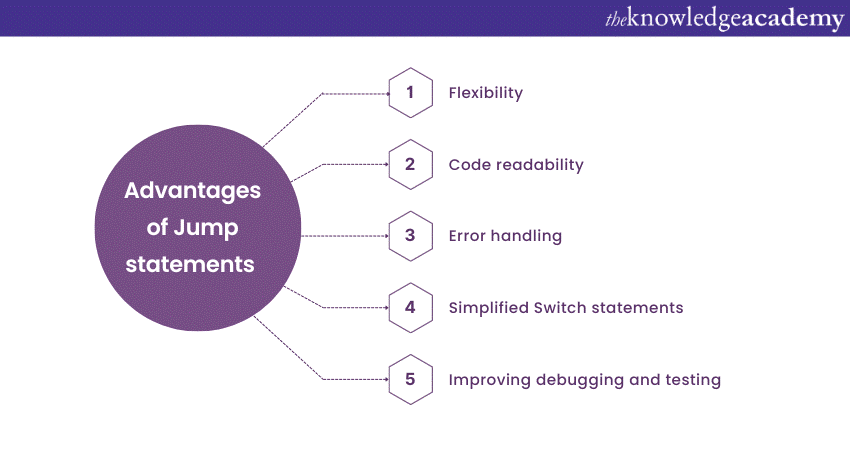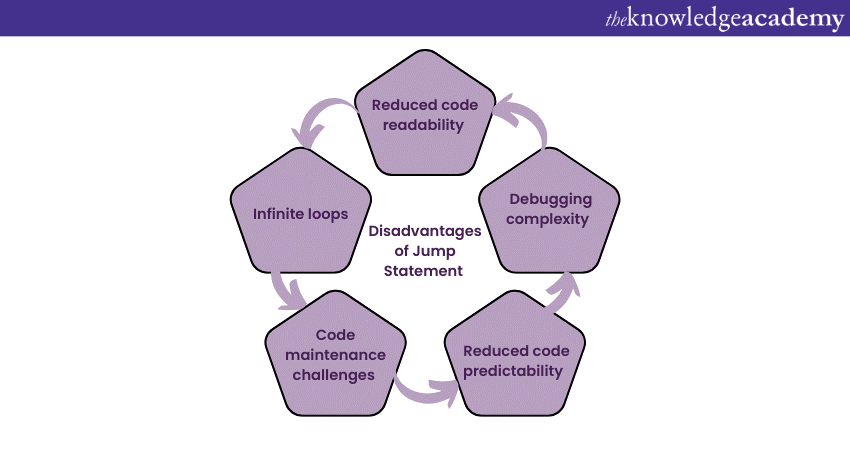We may not have the course you’re looking for. If you enquire or give us a call on +34 932716793 and speak to our training experts, we may still be able to help with your training requirements.
Training Outcomes Within Your Budget!
We ensure quality, budget-alignment, and timely delivery by our expert instructors.

In the ever-evolving landscape of computer programming, Java Application stands tall as one of the most esteemed and widely used programming languages. Its versatility and robustness have made it a top choice for developers across the globe. At the heart of Java lies a powerful mechanism known as "Jump Statements," which plays a pivotal role in governing the flow of execution within a program.
Java Application, often lauded for its "write once, run anywhere" capability, is known for its object-oriented nature, platform independence, and extensive libraries. As developers immerse themselves in crafting Java programs, they inevitably encounter situations where they need to alter the default flow of execution based on certain conditions or requirements. This is precisely where Jump Statements come into play.
Here in this blog, you will learn about Jump Statements in Java. When specific conditions are true, Jump Statements are utilised to exit the loop and break iteration loops.
Table of Contents
1) What are Jump Statements?
2) Types of Jump Statements
3) Advantages of Jump Statements
4) Disadvantages of Jump Statements
5) Conclusion
What are Jump Statements?
Java, often lauded for its "write once, run anywhere" capability, is known for its object-oriented nature, platform independence, and extensive libraries. As developers immerse themselves in crafting Java programs, they inevitably encounter situations where they need to alter the default flow of execution based on certain conditions or requirements.
Jump Statements in Java are used to transfer the program's control to a specific location within the code. They allow developers to alter the normal flow of execution based on certain conditions or requirements. Understanding how to use Jump Statements effectively can significantly enhance the readability and efficiency of your Exception Handling Java code.
Try out ourJavaScript Course for a successful career!
Types of Jump Statements
As we dig deeper into the subject of Jump Statements, we shall witness their seamless integration with loops and switch statements, providing developers with powerful tools to optimize their code. By mastering the art of using break, continue, and return statements judiciously, Java Application developers can elevate the efficiency and readability of their Java code to new heights.
Break statement
The break statement is a versatile command that empowers developers to terminate loops prematurely. When encountered within a loop, it immediately exits the loop, directing the program's execution to the first line of code after the loop's closing curly brace.
The break statement is often employed when a certain condition is met within a loop, and there is no need to continue the iteration. For example:
|
for (int i = 1; i <= 10; i++) { if (i == 5) { break; // The loop will terminate when i becomes 5 } System.out.print(i + " "); } Output: 1 2 3 4 |
The break statement is also widely used in switch statements to prevent fall-through behaviour. After executing a case, the break statement is employed to exit the switch block, avoiding unintended cascading into subsequent cases.
|
int day = 2; switch (day) { case 1: System.out.println("Monday"); break; case 2: System.out.println("Tuesday"); break; // other cases... } Output: Tuesday |
Continue statement
The continue statement, another powerful Jump Statement, facilitates skipping the remaining code within a loop for a particular iteration. When encountered, it bypasses the subsequent statements and moves on to the next iteration of the loop.
The continue statement finds extensive use when certain iterations need to be skipped based on specific conditions. It allows developers to optimize loops by excluding unnecessary computations. For example:
|
for (int i = 1; i <= 5; i++) { if (i == 3) { continue; // Skip iteration when i is 3 } System.out.print(i + " "); } Output: 1 2 4 5 |
Return statement
Unlike the break and continue statements, which are primarily used within loops, the return statement has a broader scope. It is employed inside methods to exit the method and return a value to the calling code.
|
public int add(int a, int b) { int sum = a + b; return sum; // Return the value of 'sum' to the caller } |
The return statement halts the method's execution and passes the specified value back to the calling code, allowing for dynamic data exchange between methods and their callers.
Understanding the different types of Jump Statements empowers Java developers to fine-tune their code and tailor it to meet specific requirements. Developers can extract desired results by harnessing the power of break, continue, and return statements; programmers can optimise their Java programs, making them more efficient, readable, and maintainable.
Advantages of Jump Statements
Jump Statements break, continue, and return offer a myriad of advantages that significantly enhance the efficiency, readability, and flexibility of code. As skilled programmers harness the power of these Jump Statements, they unlock a range of benefits that contribute to the development of robust and elegant Java Applications.

Method flexibility with return
The return statement serves as a powerful tool for method design. By allowing methods to exit and return values to the calling code, it enables dynamic data exchange. This flexibility empowers developers to build modular and reusable code, as methods can act as self-contained units with well-defined inputs and outputs.
Code readability and maintainability
By judiciously employing Jump Statements, developers can improve the readability and maintainability of their Java code. Properly placed break, continue, and return statements help express the intent of the code more explicitly. They reduce the need for convoluted conditional checks, nested loops, or deeply indented blocks, making the code more comprehensible to other developers.
Error handling and program flow
Jump Statements also play a significant role in handling errors and controlling program flow. By strategically using return statements within methods, developers can handle exceptional cases and gracefully exit when necessary. This leads to more robust error handling and ensures that the program continues to function correctly even in unexpected scenarios.
Simplified Switch statements
In switch statements, the break statement prevents unintended cascading and fall-through behaviour. This prevents multiple case blocks from executing when only one is intended. By using break appropriately, developers can create clearer and more concise switch statements, reducing the chances of logic errors.
Improving debugging and testing
Well-structured code that effectively uses Jump Statements can simplify the debugging and testing process. When code behaves predictably and logically, it becomes easier to identify and resolve issues during debugging. Moreover, by isolating specific sections of code using Jump Statements, unit testing becomes more straightforward and effective.
Disadvantages of Jump Statement
While Jump Statements break, continue, and return offer significant advantages in controlling program flow and optimizing code, they are not without their drawbacks. Improper use of Jump Statements can lead to code that is hard to understand, maintain, and debug. Let's explore the disadvantages of Jump Statements in Java programming:

Reduced code readability
Excessive use of Jump Statements can lead to code that is difficult to read and comprehend. When used haphazardly, Jump Statements may disrupt the natural flow of code, making it challenging for other developers (or even the original coder) to understand the logic behind the jumps. Complex nested loops with multiple breaks and continue statements can quickly become convoluted and obscure the intended functionality.
Debugging complexity
Jump Statements can complicate the debugging process, especially when used excessively or inappropriately. When the flow of execution is altered abruptly through jumps, it becomes harder to track the logic and identify potential bugs. This can lead to longer debugging sessions and may even introduce new errors while attempting to fix existing ones.
Reduced code predictability
Jump Statements can make code behaviour less predictable, especially when they are scattered throughout the codebase. When the program's flow is dependent on various Jump Statements, it becomes more challenging to anticipate how changes in one part of the code may affect the execution in other parts. This can lead to unintended consequences and subtle errors that are difficult to detect.
Code maintenance challenges
Overuse of Jump Statements can make code maintenance a daunting task. As the complexity of code increases, it becomes harder to modify and extend the application without introducing unintended side effects. Future developers working on the codebase may struggle to understand the rationale behind the Jump Statements and may be hesitant to modify the code due to the risk of breaking the intended flow.
Risk of infinite loops
Incorrectly placed or misused Jump Statements may lead to infinite loops, where the program gets stuck in an endless iteration. For example, forgetting to include a proper break condition in a loop or using a continue statement inappropriately can lead to infinite loops, causing the program to hang and become unresponsive.
Conclusion
The knowledge and expertise gained from understanding Jump Statements will undoubtedly elevate your coding prowess. As you continue to explore the vast landscape of programming which includes Java Projects, remember that Jump Statements are valuable tools in your toolkit, and with great power comes great responsibility. Harness their power wisely, and you will forge a path to becoming a proficient Java programmer capable of crafting software solutions that stand out in the ever-evolving world of technology.
Frequently Asked Questions
Upcoming Programming & DevOps Resources Batches & Dates
Date
 Java Programming
Java Programming
Mon 20th Jan 2025
Mon 3rd Mar 2025
Mon 12th May 2025
Mon 14th Jul 2025
Mon 22nd Sep 2025
Mon 17th Nov 2025







 Top Rated Course
Top Rated Course



 If you wish to make any changes to your course, please
If you wish to make any changes to your course, please


